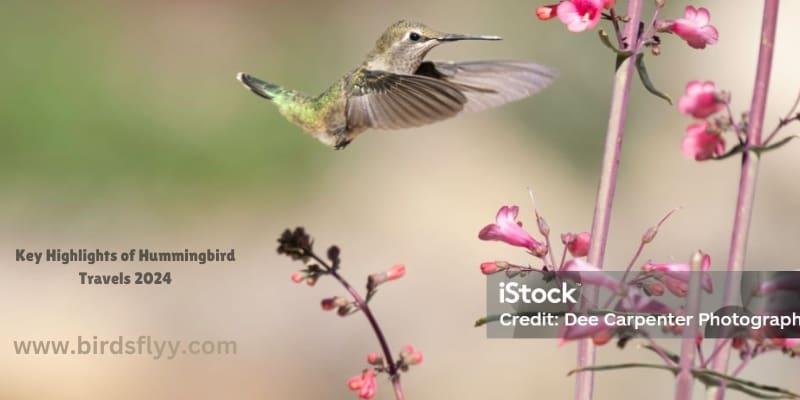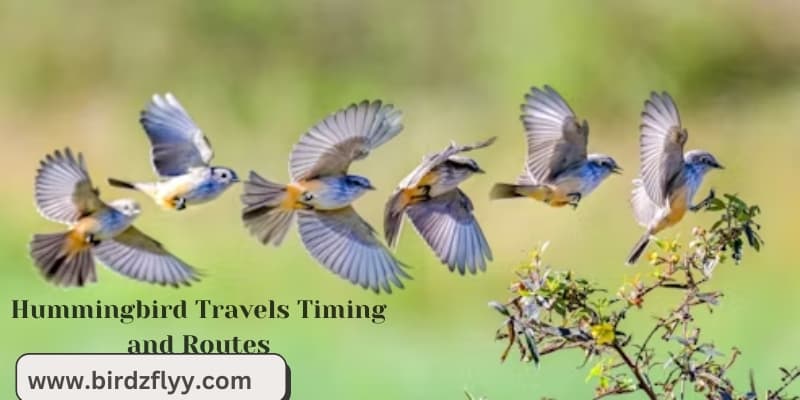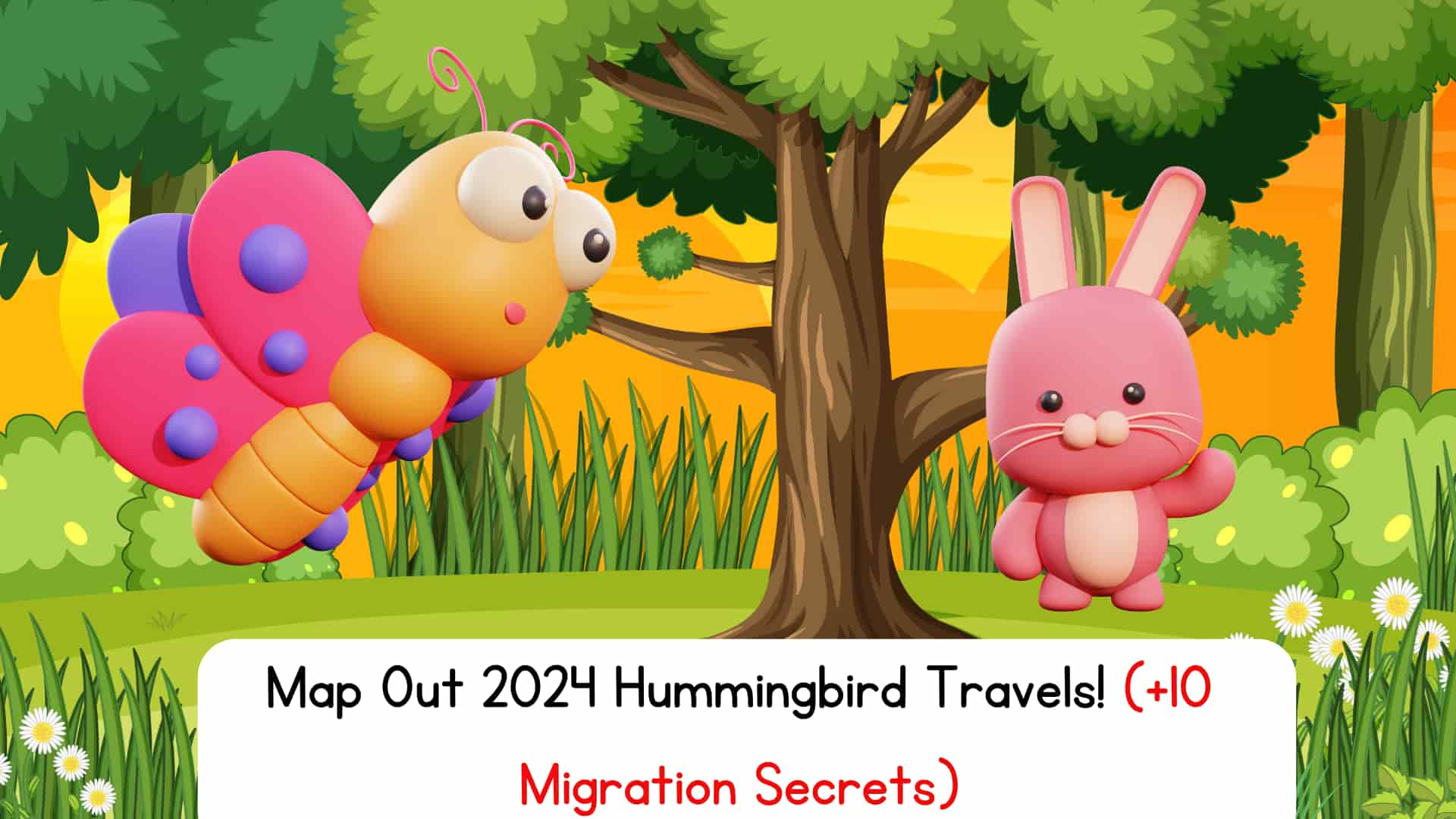Hummingbird Travels Map 2024: An Overview
If you're searching for the Hummingbird Travels Map 2024, you're in the right place. Each year, millions of hummingbirds travel across the Americas, including Mexico and the United States, following well-established migration routes. This fascinating journey sees these small but mighty birds flying long distances to breed, particularly in the southern United States, and continuing further north as spring approaches.
Hummingbird Travels Patterns and Behavior
Hummingbirds are known for their impressive migration habits, which typically begin as early as February. These birds travel during the day when flowers and nectar sources are abundant.
As they fly, hummingbirds rely on their excellent vision to locate feeding opportunities from above. Once they spot a flower or a feeder, they descend quickly to feed before taking off again.
During migration, hummingbirds take advantage of tailwinds, which help them conserve energy and travel more efficiently. They rely on both the energy from their food and the body fat they’ve stored to fuel the journey.
Experts suggest that the birds may also adjust their migration strategies to adapt to changing environmental conditions.
Also read: Hummingbird Travels Patterns and BehaviorThe Hummingbird Travels Map for 2024 provides an essential guide for understanding when and where to expect these vibrant creatures.
It helps birdwatchers and nature enthusiasts track the birds’ movements as they head north for breeding and later return south for the winter.
The map highlights key migration paths and provides a snapshot of where hummingbirds can be found throughout the year, giving people the chance to spot these stunning creatures in their own backyards or during travel.
Understanding hummingbird migration patterns is not only fascinating but also vital for preserving their habitats and supporting their survival.
Whether you’re an avid birdwatcher or simply want to attract more hummingbirds to your garden, keeping track of their migration can deepen your appreciation for these remarkable creatures.
The Hummingbird Travels Map 2024 is an invaluable resource for anyone interested in these incredible birds. As hummingbirds make their long journey north to breed, they are guided by natural cues, including the availability of nectar and favorable weather conditions.
By following their migration patterns and supporting their habitats, we can ensure that these beautiful creatures continue to thrive in the years to come.
Key Highlights of Hummingbird Travels 2024
Hummingbirds are fascinating creatures, and tracking their migration is an exciting way to understand their behavior. Every year, from January through May, hummingbird migration maps are updated with important data on their movements.

This helps birdwatchers and researchers follow the path of these tiny, yet resilient, birds.
Hummingbird Travels Patterns
During migration, hummingbirds exhibit extraordinary flight abilities. Their wings can beat 15 to 80 times per second, which equals 160 wingbeats per minute.
This high-frequency wing movement allows them to travel long distances with great speed and precision. To sustain this level of energy expenditure, hummingbirds typically gain 20% to 40% of their body weight before migrating.
These birds can fly over vast stretches of land and water, covering hundreds of miles during their journey. Interestingly, male hummingbirds are usually the first to arrive at their breeding grounds in the southern United States and other key habitats.
Also read: Hummingbird Travels PatternsSome populations even migrate as far as the southern Atlantic Ocean in California and along the Gulf of Mexico.
Mapping the 2024 Hummingbird Migration
The Hummingbird Travelsprovides detailed information about the locations and movement patterns of hummingbirds throughout the migration season.
By tracking this data, bird enthusiasts can pinpoint where hummingbirds are likely to be found at any given time.
This map is an essential tool for those interested in learning more about hummingbird behavior and migration routes.
Tracking Hummingbird Travels is a fascinating way to observe one of nature’s most incredible journeys. With each migration season, new insights emerge about these birds’ remarkable endurance and the challenges they face.
The Hummingbird Travels offers a unique opportunity to explore the movements of these energetic birds, providing valuable data for researchers and nature lovers alike.
Read more: Mapping the 2024 Hummingbird MigrationRuby-Throated Hummingbird Travels Timeline 2024
If you’re wondering when to expect Ruby-throated hummingbirds in your area, understanding their migration patterns can provide valuable insight.
The migration schedule varies slightly each year, but by looking at historical data, we can predict their movements with a fair degree of accuracy. Below is an overview of their expected arrival in 2024.
Ruby-Throated Hummingbird Arrival Dates:
Tracking the migration of Ruby-throated hummingbirds helps birdwatchers know when to expect these birds in different regions. Based on migration data from previous years, here are the key arrival periods:
- February to Mid-March: Hummingbirds begin to approach the southern United States, including states like Louisiana, Texas, Georgia, Alabama, and Florida. Some of these birds may spend the winter further south in regions like Mexico and Central America.
- April: By early April, Ruby-throated hummingbirds are typically seen in areas further north, such as Arkansas, Tennessee, Mississippi, and Texas. They also start appearing in the South Carolina to North Carolina regions.
- Mid-April: As the weather warms, the birds move into Oklahoma, Missouri, Virginia, Kentucky, West Virginia, Kansas, and Indiana.
- Late April: By the end of April, they are found in parts of the Northeast and Midwest, including Ohio, Nebraska, Iowa, New York, Pennsylvania, New Jersey, and New England.
Tracking Hummingbird Travels with the 2024 Map
The Hummingbird Travels Map 2024 offers an interactive and detailed view of Ruby-throated hummingbird movements, helping you identify when these birds are likely to arrive in your area.
This map is especially useful for birdwatchers and nature enthusiasts who want to spot these beautiful birds at their peak migration periods.
The Ruby-throated hummingbird is one of the most commonly spotted species in the United States during migration. Understanding their arrival patterns helps birdwatchers anticipate their presence and take advantage of the opportunity to observe these remarkable creatures.
The 2024 Hummingbird Travels Map provides an excellent tool to track their progress and enjoy their seasonal visits.
Read more: Tracking Hummingbird Travels Key Patterns and Species
The Hummingbird Travels Map 2024 provides valuable insights into the movement of different hummingbird species across North America. Every year, these small but powerful birds travel long distances to find warmer climates, with most migration occurring between August and September.
Below is a summary of their expected routes and key migration destinations for the coming season.
Hummingbird Travels Timing and Routes
Hummingbirds, including the Ruby-throated and Rufous species, typically begin migrating south in late summer, from August to September.

They travel in the afternoon, taking breaks to feed and refuel, ensuring they maintain enough energy for their journey.
- Ruby-throated Hummingbirds: These birds are commonly found in Arkansas, Ontario, Minnesota, Colorado, Kentucky, New Jersey, and Alabama during migration. By September, they gather in regions like Florida, southern Texas, and Louisiana, preparing to cross the Gulf of Mexico or head through Mexico to their winter destinations.
- Rufous Hummingbirds: These birds typically migrate south along the eastern edge of the Rocky Mountains and also appear in the western United States, including parts of California. They tend to migrate further west than other species like the Ruby-throated Hummingbird.
- Other Species: On the western coasts, species such as Anna’s Hummingbirds and Rufous Hummingbirds are seen more frequently, particularly in areas like California and Arizona.
Fall Hummingbird Travels and Species Movement
As the temperatures drop, hummingbirds begin to leave their northern habitats, migrating toward warmer regions in the southern United States, Mexico, and beyond. The Hummingbird Travels will provide daily updates, allowing bird enthusiasts to track the movement of these birds in real time.
The fall migration typically involves long flights, with Ruby-throated hummingbirds traveling directly across the Gulf of Mexico, while others like the Rufous Hummingbird follow different routes along mountain ranges and coastal regions.
Why Hummingbird Migration Is Fascinating
Hummingbirds are known for their incredible ability to fly long distances, using their remarkable agility and stamina to cover thousands of miles.
Their migration journey is a natural wonder, highlighting their dependence on specific routes, timing, and environmental conditions.
The Hummingbird Migration Map 2024 offers a great way for birdwatchers to learn more about the species traveling through their area. The map is updated regularly to reflect the latest sightings, helping you stay informed about migration trends and routes.
Conclusion:
Tracking Hummingbird Travels is an exciting way to connect with nature and learn more about these incredible birds. By using the Hummingbird Travels Map 2024, you can monitor the movement of different species as they travel from their breeding grounds to warmer climates.
Whether you’re interested in Ruby-throated or Rufous hummingbirds, the map provides all the details you need to follow their journey and appreciate their unique behaviors.
FAQ’s: Hummingbird Travels
1. How can I use the Hummingbird Migration Map 2024?
The Hummingbird Migration Map 2024 can be used to track the seasonal movements of hummingbirds, helping birdwatchers and researchers identify peak migration times and locations. This information is useful for planning birdwatching trips and for conducting scientific studies on migration patterns.
2. What information does the Hummingbird Migration Map 2024 provide?
The map provides detailed routes of hummingbird migration, including start and end points, key stopover locations, and the timing of these movements. It also highlights variations in migration paths among different hummingbird species.
3. Why is the Hummingbird Migration Map 2024 important for conservation efforts?
This map is crucial for conservation efforts as it helps identify critical habitats and potential threats along the migration routes. By understanding these pathways, conservationists can work to protect key areas that are vital for the survival of migrating hummingbirds.
4. How accurate is the Hummingbird Migration Map 2024?
The accuracy of the map depends on the quantity and quality of data collected from observations and tracking devices. It is continually updated with new data to reflect the most current understanding of hummingbird migration patterns.
5. Can the public contribute to the Hummingbird Migration Map 2024?
Yes, the public can contribute by submitting their observations of hummingbird sightings to birdwatching databases and platforms that feed into the migration map. Citizen science plays a vital role in enhancing the comprehensiveness and accuracy of the map.

